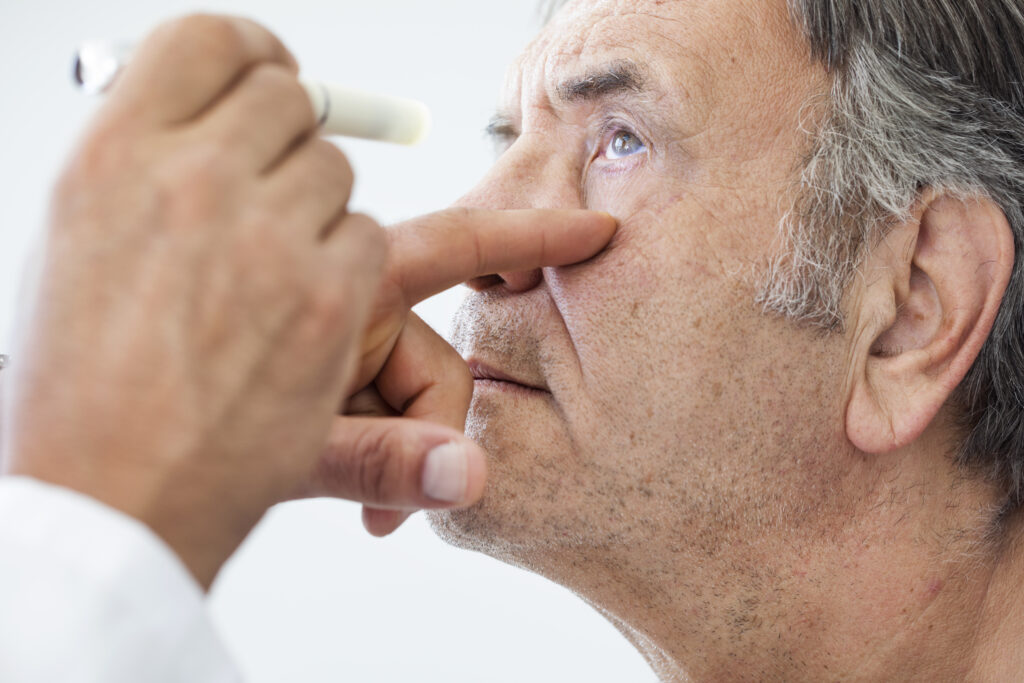by TERESA SCHIFFER
Sponsored by Central Florida Health Care
Something many people struggle with as they get older is a decline in their eyesight. Cataracts are a major cause of vision problems in individuals as they age. Central Florida Health Care optometrist Dr. Barbara Miller provides some valuable insight into what cataracts are and how you can protect your vision.
“A cataract is a cloudy or opaque area in the normally clear lens of the eye, and depending on the size and location it can interfere with your vision,” Miller says. “Most cataracts develop over the age of 55. Usually they develop in both eyes, but one may be worse than the other.”
Although age is the most common cause of cataracts, there are some other health and lifestyle factors that can also play a role in their development.
“Some of the causes and risk factors could be diabetes – people with diabetes are at higher risk for cataracts; certain medications are associated with cataract development, like steroids, and some other medications; UV light; smoking; and nutritional deficiencies,” she says.
While there are no clinically proven treatments to prevent or slow cataracts, Miller says there are simple strategies that may be helpful, like reducing exposure to sunlight with UV-blocking lenses, decreasing or stopping smoking, and increasing antioxidants.
Once the cataracts have progressed to the point of severely impeding a patient’s vision, the only remedy is surgery. The procedure involves removing the affected portion of the patient’s eye (the lens) and replacing it with an artificial lens. The operation is safe and effective and is generally performed as an outpatient procedure.
“Treatment is based on the level of impairment they cause,” Miller explains, “and they’re diagnosed with a comprehensive eye exam.”
Miller recommends regular visits with an eye doctor to monitor any potential development of cataracts. This is especially helpful for patients who wear prescription eyeglasses, as changes in the prescription can be an indication of cataracts or other eye problems developing.
“Symptoms can be blurred or hazy vision, decreased intensity of colors, increased sensitivity to glare from light, and increased difficulty seeing at night,” she elaborates.
Excessive exposure to UV light is known to contribute to numerous health concerns, including eye problems such as the development of pterygium. This is a noncancerous growth that can occur in one or both eyes. It usually starts on the clear tissue of the eye and may spread to the cornea. It is characterized by its slightly raised surface and has the potential to cause irritation and vision problems. Like cataracts, the only real treatment for pterygium is surgery, though eye drops can provide some relief.
Just as UV damage accumulates over the course of one’s lifetime in a person’s skin, eyes are similarly affected by sunlight. That’s why it is never too early to begin taking precautions and protecting yourself from the damaging effects of the sun’s rays. As you stock up on sunscreen that offers broad spectrum protection for the summer months, invest in a few pairs of sunglasses that also provide protection from UVA and UVB rays. Sunhats and caps with brims over the face can further reduce the amount of ultraviolet radiation that reaches the delicate tissue of the eyes and face.
Make sure you are protecting your eyes this summer, and visit the professionals at Central Florida Health Care for routine vision exams and other important health screenings. A proactive approach to your well-being is the best way to stay healthy and fit through the years.
